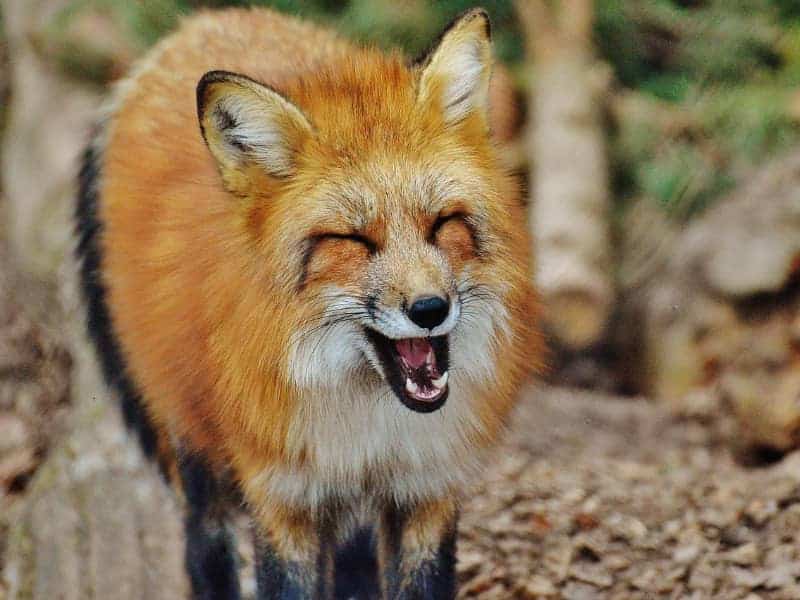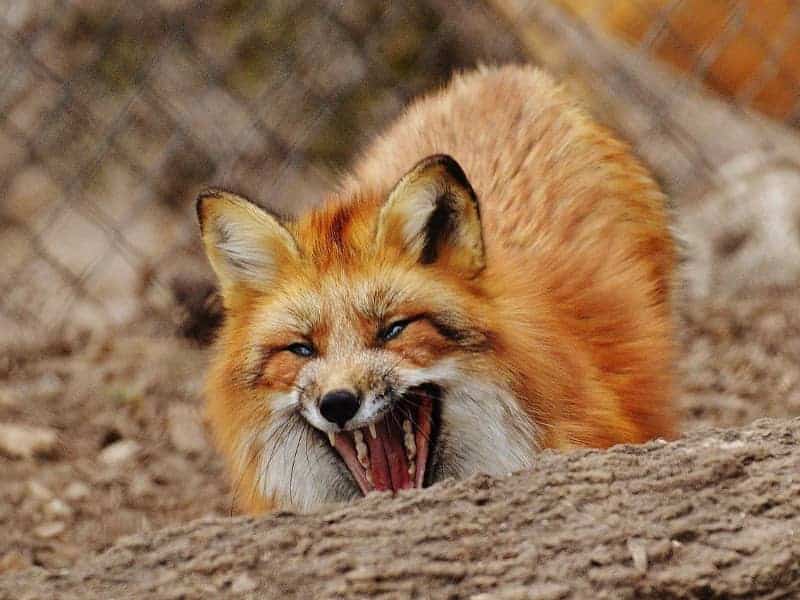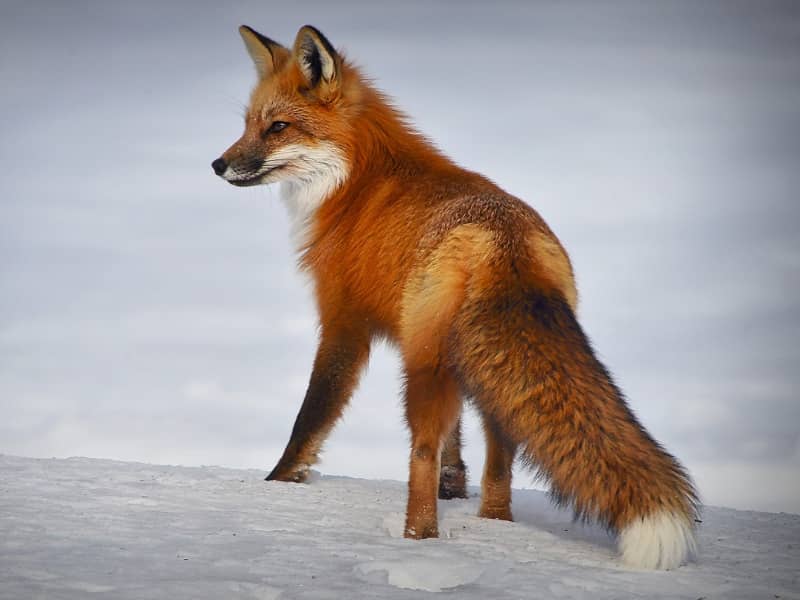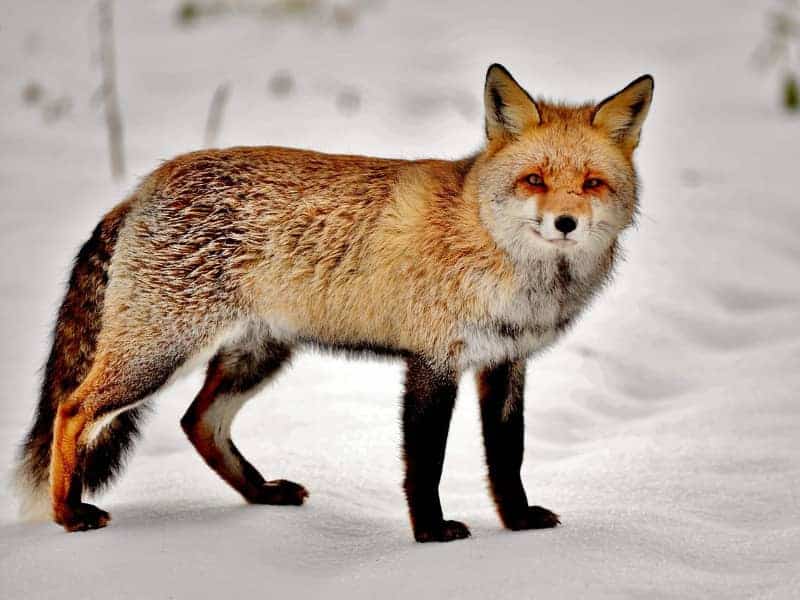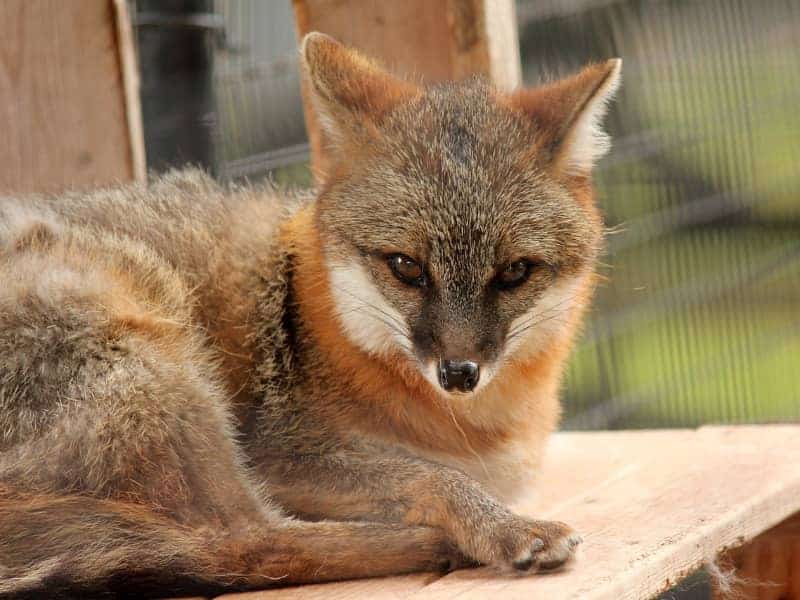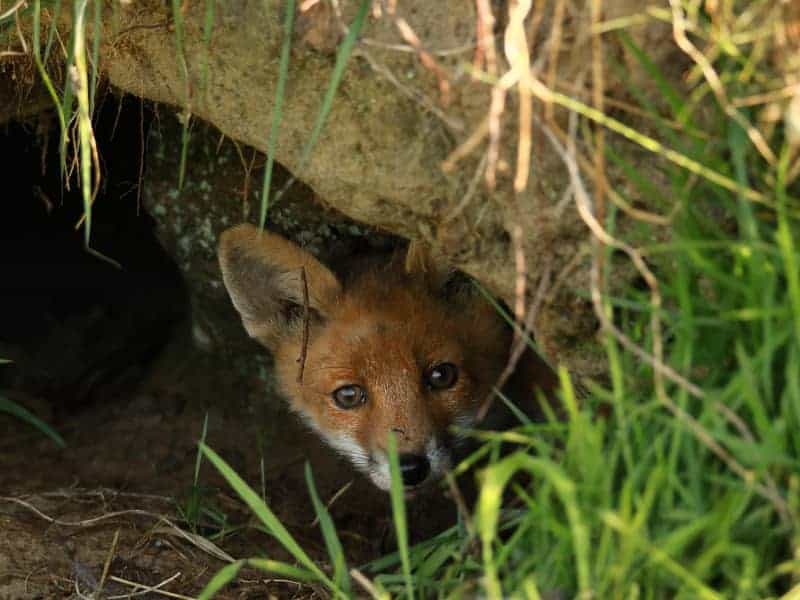
What does a fox's den look like?
The fox den is also called an earth den and serves as a safe retreat for foxes mainly in winter and when rearing young. We would like to introduce you to what is so special about these fox burrows and which for us humans surprising living communities are formed under the earth. Let us surprise you, you will learn a lot of new things.
How to create a foxhole
The classic fox burrow is dug by the fox itself. With its front paws, it digs holes by carrying the accumulating earth backwards between its legs. An earth burrow of the fox is therefore relatively easy to recognize, because in many cases there are piles of earth at the entrance. The fox burrow has a main tube that opens into a cauldron.
These cauldrons are large enough for the doe, the female fox to raise her offspring there for the first few weeks and there is still room for the young foxes to play. The fox's den, with its cauldron and main tube, is flanked by several lateral passages. These passages also lead to the surface and are so-called escape tubes.
In case of danger inside the fox den, the fox will always take the shortest way to the surface. Therefore, the different escape tubes to get outside as quickly as possible. Conversely, these escape tubes are perfect for the young foxes making their first free walk. If there is danger nearby, then you can get through the escape tubes into the safe cauldron.
The foxhole, not always built by the fox
Foxes think practically. Thus, they have no problems whatsoever in taking over an abandoned badger burrow and colonizing it. They then provide further passages, primarily escape passages, which the badger creates in a different form to the fox. Within a few days, the fox can thus create a new territory for itself and live there comfortably, sometimes for years.
As soon as foxes live near humans, they use the available opportunities to conquer new living space. Thus, under garden houses, the cavities or the soft earth are used to set up a fox den there. But also tree stumps, wood piles or rock crevices can be a good place for the fox to raise its young.
In Berlin, a survey was made in 2014 in the district of Neukölln, where foxes live. Here, the largest proportion of 34 % occupied buildings, garden sheds and garages as habitat for the fox. However, it also lived under sand piles and compost heaps. Especially the compost heap is very convenient for the fox, because he is an omnivore. Man feeds him, so to speak, right outside his front door.
The fox and his roommates in the foxhole
As already mentioned, foxes like to take over burrows from the badger. It is not uncommon for the badger and the fox to raise their young together in a more spacious burrow. Of course, not together in one cauldron, but separately in two different areas of the burrow. However, it happens again and again that the fox or the badger, kills the young of the other.
Especially when the young foxes get older and fly, the badgers seem to be bothered by the presence. It is assumed that this is due to the activity of the foxes, the badgers prefer to live quietly and young foxes, like young dogs, are very playful and accordingly romp around a lot. Most badgers feel so disturbed by this that they leave the burrow during this time.
Otherwise, badger and fox get along relatively well. Observations show that fox and badger mostly do not meet aggressively. If this does happen, the badger clearly dominates the fox. By short and fast advances the badger attacks the fox without establishing contact. Here the fox retreats and accepts the dominance of the badger.
However, the fox benefits from the hunting success of the badger. This is because a badger leaves the remains of its hunt when it is full. This is a laid table for the fox and so it is assumed that the fox at times specifically seeks the proximity of the badgers.
Other co-inhabitants in the burrow of the fox
It has even been observed that the fox inhabits a burrow together with wild rabbits. It has also been observed in symbiosis with polecats and shelducks. These are normally all prey animals of the fox, but as soon as a common den is available, the fox seems to have made peace with these animals.
However, this peace applies only to the immediate vicinity of the foxhole and not to more distant places. Here geese and rabbits are again considered a source of food.
Author

-
Garden animal - A life with nature
Welcome to my animal blog! My name is Dirk and I am happy to take you on my journey through the fascinating world of animals and gardening.
Born 54 years ago, I have had an insatiable curiosity for the animal world around me since childhood. Although I have moved professionally in other industries, my true passion has always been animals and nature. It is remarkable how a small garden has become such an important part of my life.
Many of my fondest memories are associated with the animals that share our home. Whether it's the curious squirrels that scurry across the trees in the morning, the colorful variety of birds that visit our feeders, or the busy bees and butterflies that pollinate our flowers, every moment with them is invaluable to me.
This blog is my contribution to share my experiences, discoveries and insights with like-minded people. Here I will share stories of unforgettable encounters with animals, give tips on gardening and creating wildlife-friendly habitats, and take you on my journeys through nature.
Thank you so much for being here!
Cordial,
Dirk aka garden animal
Last posts
- 27. February 2024PetsVeganes Hundefutter – Grün und Gesund?
- 18. January 2024ChickensOregano für Hühner
- November 27, 2023HamsterDiurnal hamsters
- November 24, 2023HamsterHamster hammock

